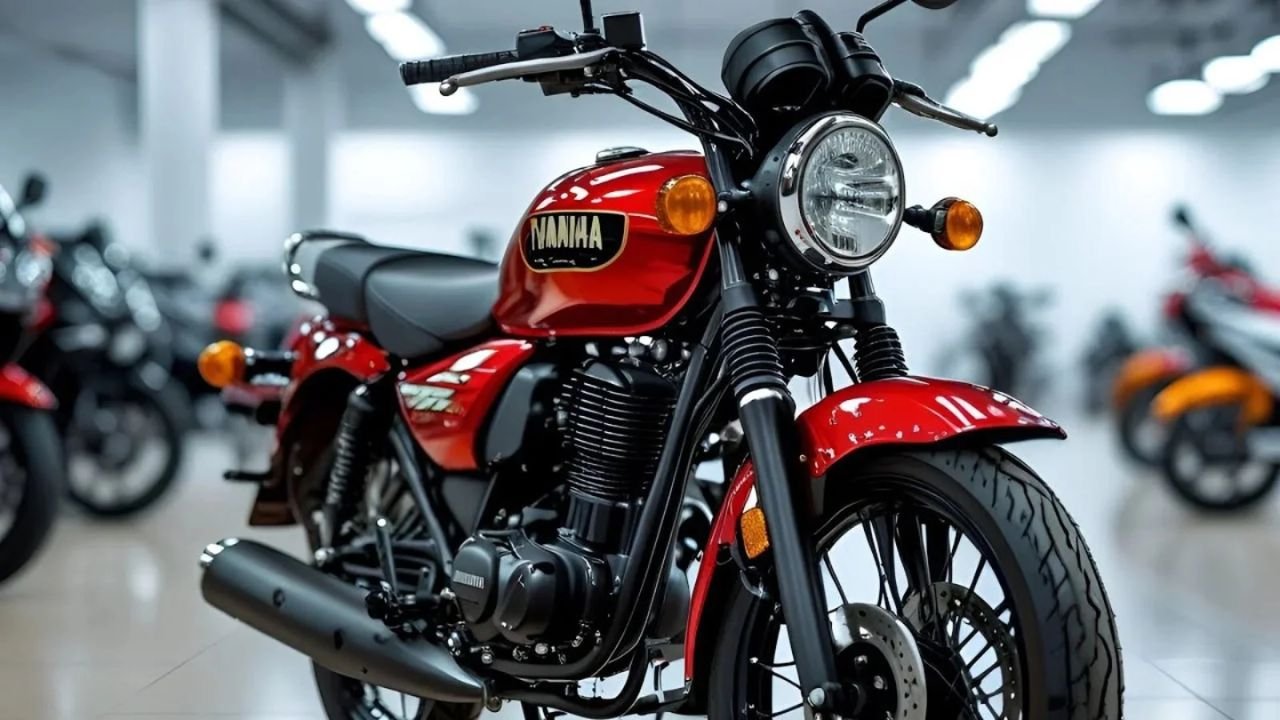The Yamaha RX100 is not just a motorcycle – it’s an emotion, a symbol of freedom, and an unforgettable chapter in India’s biking history. For decades, this machine has ruled the hearts of riders, leaving behind a legacy that modern motorcycles still aspire to match. Born in the mid-1980s, the Yamaha RX100 was a game-changer. It broke away from the monotony of slow and purely utilitarian two-wheelers, offering speed, style, and a thrill that was unheard of in the Indian market at the time.
With its roaring exhaust note, lightweight design, and unmatched agility, the Yamaha RX100 quickly became a cultural icon. Today, even decades after it went out of production, it enjoys a cult following among collectors, restorers, and nostalgic riders.
The Arrival That Changed Indian Roads
When Yamaha introduced the RX100 in 1985, India’s motorcycle market was dominated by fuel-efficient but uninspiring machines. Then came this small but fiery 98cc two-stroke motorcycle that could sprint like no other. Producing nearly 11 HP, the Yamaha RX100 offered a level of acceleration that thrilled young riders and redefined performance expectations.
Weighing just about 100 kg, its power-to-weight ratio made it incredibly nimble, perfect for weaving through city traffic or cruising along open highways. For the first time, Indian bikers had access to a compact, affordable motorcycle that delivered sports-bike-like excitement without compromising reliability.
Technical Highlights of Yamaha RX100
| Feature | Details |
|---|---|
| Engine | 98cc, air-cooled, 2-stroke |
| Max Power | Approx. 11 HP |
| Transmission | 4-speed manual |
| Weight | ~100 kg |
| Top Speed | ~100 km/h |
| Brakes | Drum (Front & Rear) |
| Fuel Economy | 25–30 km/l (tuning dependent) |
| Suspension | Telescopic front forks, Swingarm rear |
| Production Years | 1985–1996 |
| Fame | Iconic performance & legendary exhaust note |
The Legendary Exhaust Note
One of the most defining features of the Yamaha RX100 was its unforgettable exhaust sound. This wasn’t just a mechanical noise – it was a heartbeat that echoed through streets, instantly recognizable to enthusiasts. The raspy, high-pitched note came from its expertly tuned expansion chamber and high-revving engine, producing a sound that riders wore like a badge of honour.
Even today, hearing an RX100 pass by is enough to spark nostalgia among those who grew up in its golden era. This unique sound was part of its identity and one of the main reasons it became such an emotional attachment for its owners.
Minimalist Yet Striking Design
The Yamaha RX100 was proof that simplicity can be stunning. Its small, rounded fuel tank, flat cushioned seat, chrome mudguards, spoke wheels, and round headlamp gave it a raw, functional beauty. Yamaha avoided unnecessary complexity, keeping the bike’s styling clean and timeless.
The bold tank decals and bright colour options added vibrance, while the exposed engine gave it a muscular, purposeful look. Decades later, when parked next to modern motorcycles, a well-maintained RX100 still draws more admiration – a testament to its evergreen design appeal.
Also Read – $4983 Direct Deposit Hits in August 2025, Are You Eligible?
Pure Riding Pleasure
Riding the Yamaha RX100 was pure joy. Its crisp throttle response and instant power delivery meant you didn’t have to push hard to feel its punch. The 4-speed gearbox offered smooth shifts, and the lightweight frame made handling an absolute delight.
Whether slicing through urban traffic or taking on winding country roads, the RX100 provided a thrilling yet controlled experience. The telescopic front forks and twin rear shock absorbers ensured a comfortable ride even on rough roads, while the drum brakes were adequate for its weight and performance.
Built Tough, Built to Last
One of the reasons the Yamaha RX100 is still revered today is its bulletproof reliability. Its simple, robust engineering made it easy to maintain. Even mechanics with basic tools could service it with ease, making it a popular choice in every corner of India.
If cared for properly, the RX100’s engine could last decades. Even today, many bikes from the late ’80s start with just a single kick and run smoothly. The availability of aftermarket parts ensures that enthusiasts can restore and maintain them in pristine condition.
The Racer’s Favourite
Beyond being a street bike, the Yamaha RX100 carved a reputation in racing. It became a favourite at drag races and hill climbs across the country. Tuners experimented with increasing displacement, porting cylinders, upgrading carburettors, and fitting expansion chambers to extract incredible performance from the small engine.
Its lightweight frame and quick acceleration meant that in short-distance sprints, it could often beat bigger, more powerful motorcycles. For many Indian racers, the RX100 was their first taste of competitive motorsport.
A Collector’s Dream
The Yamaha RX100 has now achieved vintage status. Original, well-maintained examples are highly sought after, with prices ranging anywhere from ₹1 lakh to ₹2 lakh or more, depending on originality and condition. Collectors value bikes with matching chassis and engine numbers, authentic paint schemes, and OEM parts.
Restorers often go to great lengths – even importing original parts – to keep their RX100s faithful to factory specifications. Owning one today is not just about riding; it’s about preserving a piece of Indian motorcycling heritage.
Why Was It Discontinued?
The Yamaha RX100 was discontinued in 1996, not due to lack of popularity but because of stricter emission norms. Its two-stroke engine, while thrilling, produced more emissions compared to modern four-stroke engines. Adapting it to meet regulations without losing its performance would have required compromises Yamaha wasn’t willing to make.
Frequently Asked Questions
Q1. Can you still buy a Yamaha RX100 today?
Not new, but pre-owned and restored models are available through private sellers, vintage bike dealers, and auctions.
Q2. Is it still practical for daily use?
Yes, if maintained properly. However, it lacks modern features like disc brakes, electric start, and fuel injection.
Q3. Will Yamaha relaunch the RX100?
Rumours suggest Yamaha might revive the RX100 name with a modern four-stroke engine, but there is no official confirmation.
Q4. What makes the Yamaha RX100 so special?
Its unmatched power-to-weight ratio, iconic sound, timeless design, and emotional connect make it a true legend.
The Yamaha RX100 Legacy
More than just a motorcycle, the Yamaha RX100 represents an era when riding was raw, connected, and soulful. It wasn’t about digital screens or riding modes – it was about the pure joy of twisting the throttle and feeling the instant surge of power.
From being a teenage dream to a respected collector’s gem, the RX100 has lived many lives. Even in the age of electric scooters and feature-packed bikes, its charm remains unmatched. If you ever hear that distinctive exhaust echo down a quiet street, take a moment – you’re hearing history in motion.
Some Important Link
| Download News APP | Click Here |
| WhatsApp Group | Click Here |
| Home Page | Click Here |





